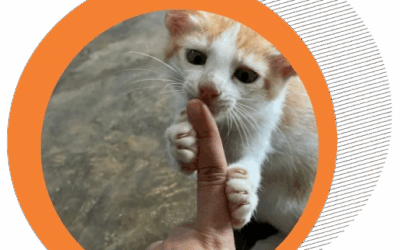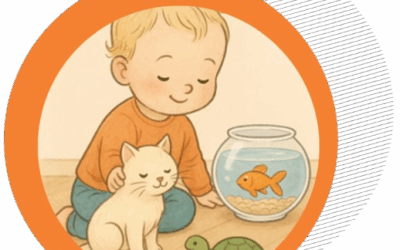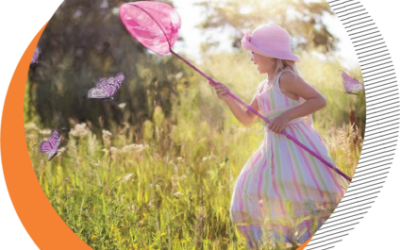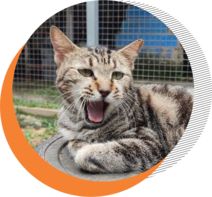
More Than Just War Victims: Those Rarely Spotlighted by the Mass Media
By : Arditya Laksono
Freelance English Tutor
Translator : AWI Team
The sound of bullets whistling and bomb explosions shook the ground. Black smoke and thick dust from buildings destroyed by bombs rose in the sky. Residents and animals in the area were frightened and ran for safe shelter. That’s what the hustle and bustle of war in areas of armed conflict such as Gaza and Ukraine has been like in recent times. So many human victims fell as a result of the war.
However, it is not only humans who are victims of war; animals also feel the same impact. Often, those who cannot speak (animals) are
neglected. Domestic animals, livestock, and wildlife alike are victims of conflict, suffering pain, hunger, and fear.

Read Also : HOW TO IDENTIFY CRUELTY TO ANIMALS
No war has a happy ending; there are always parties who suffer the most from this event, and animals are one of them. The Conflict and Environment Observatory website reveals that animals are the victims who suffer the most when war occurs, and existing international policies do not include adequate support for animal welfare. Therefore, the fate of animals in areas of armed conflict is often neglected.
Those who are voiceless and neglected
The mass media often only reports on the human-victim side of armed conflict. However, humans are not the only ones who are victims. Pets abandoned or separated from their owners roam the streets, looking for food and shelter. Not infrequently, they become victims of stray bullets, bomb explosions, and even being buried in collapsed buildings. Livestock whose owners were forced to leave them stranded on farms until they got sick. Wild animals, both in zoos and in the wild, lose their habitats, are injured by bullets, bombs, and land mines, and can even become prey for opportunists who are taking advantage of the chaotic regional situation.

Light in the dark: Those who fight for animals in war zones
Behind the many news stories and statistics of casualties and material losses due to war that appear in the headlines, there are moving stories about the struggles of individuals and organisations fighting to save these animals. The following are some small examples of stories of the struggle of individual volunteers and organisations to save animals in conflict zones:
1. The story of Maria Vronska from Ukraine, who built a shelter for 700 cats and dogs abandoned in Kyiv due to the Russian-Ukrainian war.
2. The story of Ewa from Poland and Nataliia Popova from Ukraine, who risked their lives to save Ukrainian wildlife from the Russian-Ukrainian war.
3. The story of Saeed All Er from Sulala Animal Rescue, who struggled
with the gripping war in Gaza to save animals such as abandoned
dogs, cats, and donkeys with limited resources.

These stories are a reminder that animals, like humans, are living creatures capable of feeling pain and suffering. They also both have precious lives, and they only have the chance to live once in this world. Animal welfare in conflict zones is not just a matter of compassion but also a matter of public health. Sick and dead
animals have the potential to spread disease to surrounding communities. It’s hard to imagine how difficult the situation would be if this situation were left unchecked. Already sick and injured from the war, citizens had to be bothered by zoonotic diseases caused by sick and dead animals.
Read Also : Stray Animals, Who Are They?
How can we take action?
Protecting animals in zones of armed conflict is a shared responsibility. We can support organisations working in the field by signing up to volunteer or donate to rescue efforts, emergency care, and educational programmes to raise awareness about the issue. The following are some examples of charitable organisations that focus on the safety of animals in war zones:
1. Sulala Animal Rescue
2. International Fund for Animal Welfare (IFAW)
3. Warpaws
4. Fourpaws International
5. World Animal Protection Internationa
Every action, no matter how small, can make a difference in the lives of animals suffering from war. By collaborating, we can help create a safer and more compassionate world for all living things.

Read Also : Animal’s Level and Response to Traumatic Events



Source:
https://ceobs.org/how-animals-are-harmed-by-armed-conflicts-and-military-activities/ https://www.ifaw.org/international/press-releases/animals-people-war-impact-conflict https://www.voanews.com/a/saving-animals-during-war-ukrainians-honored-for-their-work/7567827.html https://abcnews.go.com/International/few-resources-left-gaza-animal-rescuer-sulala/story?id=106974094 https://sulalaanimalrescue.com
Photo source:
https://www.pexels.com/photo/a-cat-walking-in-the-building-ruins-17543795/ https://www.pexels.com/photo/photo-of-a-cat-sleeping-on-gray-concrete-bench-757457/ https://www.pexels.com/photo/brown-tabby-cat-on-brown-and-beige-floral-sofa-chair-10353244/ https://www.pexels.com/photo/animal-skull-on-pebbles-17633642/ https://www.pexels.com/photo/skull-of-buffalo-on-meadow-20349961/ https://www.pexels.com/photo/cute-dog-hiding-inside-a-cage-9862785/ https://www.pexels.com/photo/happy-dog-in-kennel-lined-with-newspapers-16583180/ https://www.pexels.com/photo/a-veterinarian-vaccinating-a-dog-7469213/ https://www.pexels.com/photo/person-putting-bandage-on-the-dog-s-hand-7474853/
Related Post
World Cat Day Marked by the Launch of Animal-Friendly School Program
Jakarta, August 8, 2025 – The celebration of World Cat Day at SDN Menteng 02 Jakarta was truly special. Animal Welfare Indonesia, through the JAAN Domestic initiative, launched the “Animal-Friendly School” program, a concrete step to build a generation that is...
I’m Not Trash: The Story of a Cat Who Was Once Abandoned
I was abandoned. Not because I was naughty. Not because I was sick. But because I was no longer seen as important. A small cardboard box became my last shelter before being thrown to the side of the road. People walked by, some glanced, but none stopped. I stayed...
Build Your Child’s Responsibility Through Pet Care
By: Drh. Mikeu Paujiah, Dipl. MontessoriKeeping a pet is not just about filling leisure time. For children, taking care of a pet can be a powerful way to learn empathy, responsibility, and compassion. However, without proper guidance from parents, this process may be...
Children & Pets: Playmates and Unexpected Empathy Teachers
Having a pet is not only enjoyable for children but also brings tremendous benefits for their growth and development. “Children and pets: playmates and empathy teachers”—this is the dual role animals play in a child’s life, a role we often overlook.Let’s explore how...
Going Viral is Fine, But Pets Are Not a Passing Trend!
By : Drh. Mikeu Paujiah & MaryamRecently, adorable videos of puppies, exotic cats, and charming reptiles have flooded social media. Many people are tempted to buy pets impulsively without considering the long-term consequences.Unfortunately, decisions made due to...
Neighbors and Our Pets: Neighborly Ethics for Pet Owners
Drh. Mike PaujiahOwning a pet is not just about providing food and shelter. Behind all the warmth and joy that pets bring, there lies a responsibility that is often overlooked: maintaining good relationships with the social environment, especially with neighbors.The...





